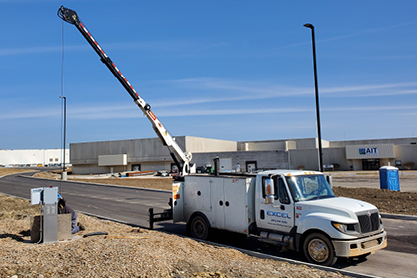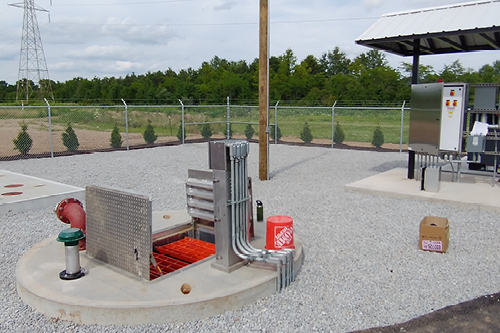 EPA Pump Station Maintenance Recommendations
EPA Pump Station Maintenance Recommendations
Pump stations are an integral part of many industrial and municipal water and wastewater systems. Along with the piping network, they are the collection system that brings sewage through the waste stream to a treatment plant. As such, it is essential that the pump station is well-maintained to ensure that it operates efficiently and effectively. This article will cover what the Environmental Protection Agency (EPA) suggests as the minimum requirements for pump station maintenance and the best ways to ensure your station complies.
The EPA has issued a set of guidelines for the operation and maintenance of wastewater treatment plants. From the U.S. EPA’s Operation, Maintenance, and Rehabilitation Techniques chapter in their Optimizing Operation, Maintenance, and Rehabilitation of Sanitary Sewer Collection Systems work, these requirements are intended to help plant operators ensure that their systems are operating efficiently and effectively, and to prevent the release of pollutants into the environment. These guidelines along with the "Ten State Standards" of the Great Lakes – Upper Mississippi River Board (GLUMRB) provide detailed information on the maintenance requirements for various components of the system, including pump stations. According to the EPA, the minimum requirements for pump station maintenance include regular inspections, cleaning, lubrication, and replacement of parts as necessary. Let's take a closer look at each of these requirements.
Regular Pump Station Inspections
Regular inspections are a critical part of maintaining pump stations. The EPA recommends that pump stations should be inspected at least once a week to identify any potential problems. During the inspection, the operator should check for debris, leaks, excessive runtimes, unusual noises, and any other signs of wear and tear. This helps ensure that anything is caught before a small problem turns into a costly one.
Additionally, pump stations should be cleaned regularly to prevent the buildup of debris or other materials that could cause blockages or damage to the pumps or other components of the system. This includes cleaning the pumps, the wet well, and the piping system. Cleaning should be conducted at least once a year, and more frequently if necessary.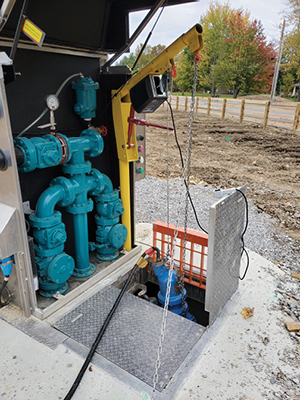
Pump Maintenance
The pumps in a pump station are the heart of the system, and they require regular maintenance to function correctly. The EPA recommends that the pumps should be inspected and serviced “according to the manufacturers recommendations.” A good rule of thumb is to check them at least once every three months. During this maintenance, the operator should check the impeller and casing for debris, wear and tear, replace any damaged parts, and lubricate the bearings and seals in self-priming pumps. Submersible pumps are internally, self-lubricated. Read more about the differences in our previous Submersible vs. Self-Priming blog.
Electrical Pump Station Maintenance
The electrical system is another critical component of a pump station that drives the system. Think of it as the brain of the system relaying information about the system back to the operator. The EPA recommends that electrical equipment should be inspected and tested at least once every six months. This maintenance should include a general inspection of the panel, including the condition of the wires, operating the circuit breakers, and verifying correct operation with the level controls. A good rule of thumb is to follow the checklist of components we ensure are tested during our Start-Up process.
Pump Station Emergency Preparedness
It is crucial to have an emergency preparedness plan in place for pump stations. This plan should include procedures for responding to power outages, equipment failures, and other emergencies. The EPA recommends that pump station operators should review and update their emergency preparedness plan at least once a year.
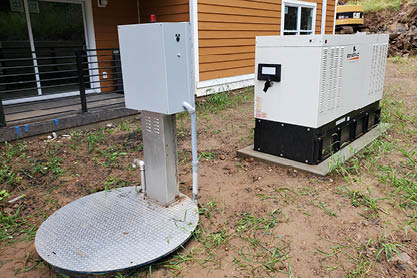 Emergency preparedness can also be covered by how well you and your team is prepared for downtime. Pump stations naturally require regular replacement of parts to ensure that they continue to function properly. This includes replacing worn or damaged pumps, valves, bearings, and other components of the system. Ensuring that you have immediate access to commonly replaced items is recommended.
Emergency preparedness can also be covered by how well you and your team is prepared for downtime. Pump stations naturally require regular replacement of parts to ensure that they continue to function properly. This includes replacing worn or damaged pumps, valves, bearings, and other components of the system. Ensuring that you have immediate access to commonly replaced items is recommended.
As discussed in our What Emergency Power Supply is Right for Your Pump Station? article, a generator is a great way to give you and your team extra time during an emergency. We recommend the best practice of cycling an emergency power backup at least once per month. Especially in permanent diesel fuel, propane, or natural gas generators, this will ensure it’s available when you need it in a crisis.
Pump Station Operator Training
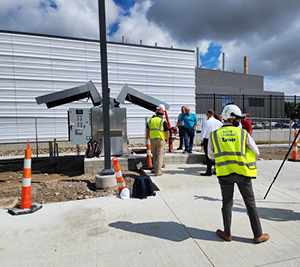 Finally, it is essential to ensure that pump station operators are adequately trained to perform their duties. The EPA recommends that pump station operators should receive regular training on pump station maintenance, emergency preparedness, and safety procedures. Operators and maintenance staff should be trained in the proper operation and maintenance of the system, as well as in safety procedures and emergency response protocols. Training should be conducted on a regular basis and should be tailored to the specific needs of the system.
Finally, it is essential to ensure that pump station operators are adequately trained to perform their duties. The EPA recommends that pump station operators should receive regular training on pump station maintenance, emergency preparedness, and safety procedures. Operators and maintenance staff should be trained in the proper operation and maintenance of the system, as well as in safety procedures and emergency response protocols. Training should be conducted on a regular basis and should be tailored to the specific needs of the system.
In addition to these minimum requirements, the EPA also recommends that pump stations be equipped with various monitoring and control systems to ensure that they operate efficiently and effectively. These systems include flow meters, pressure gauges, level sensors, and other instruments that can provide real-time data on the performance of the system. By monitoring these parameters, operators can detect potential problems early on and take corrective action before they become serious.
